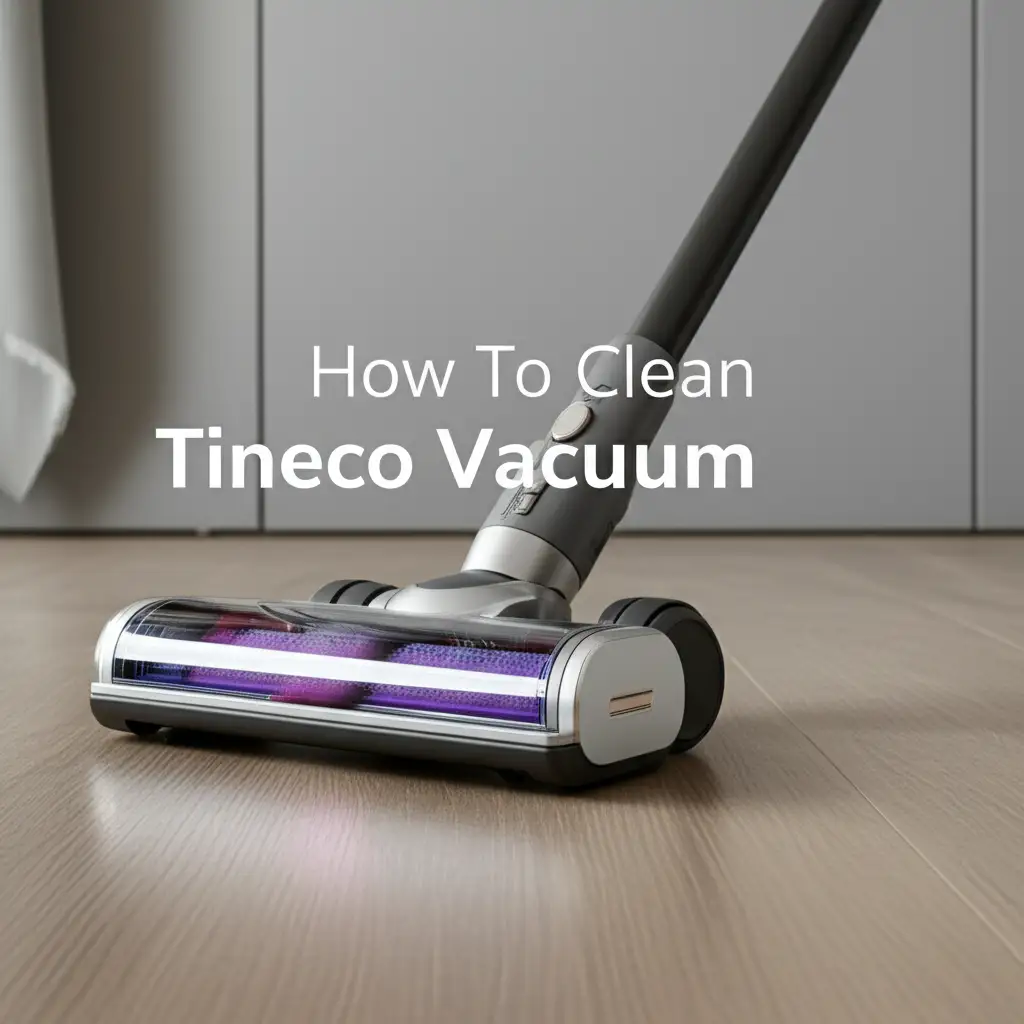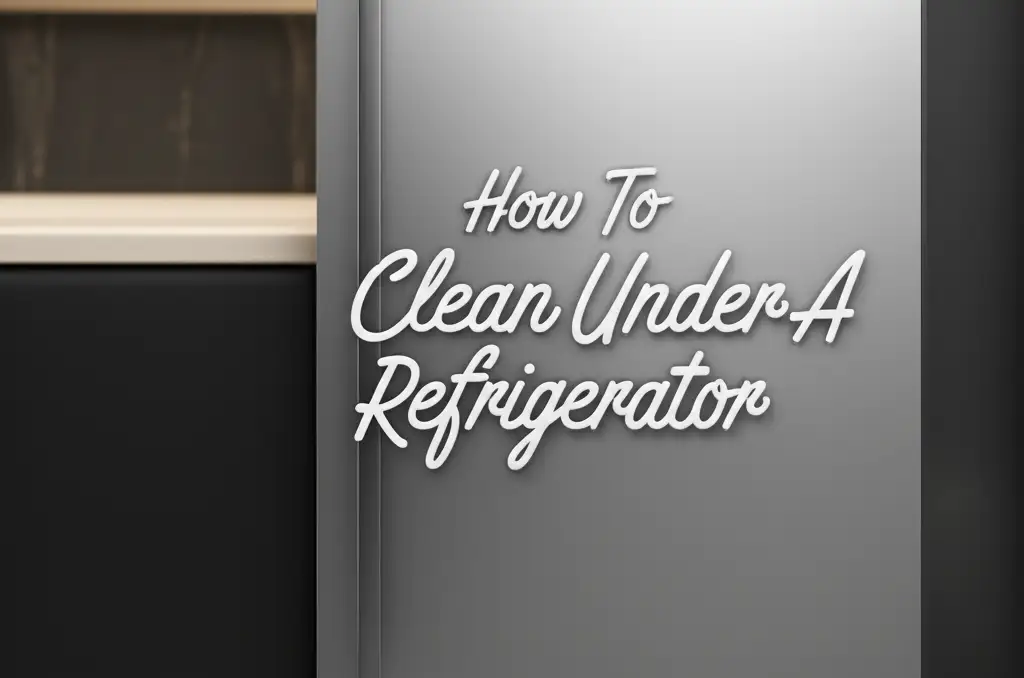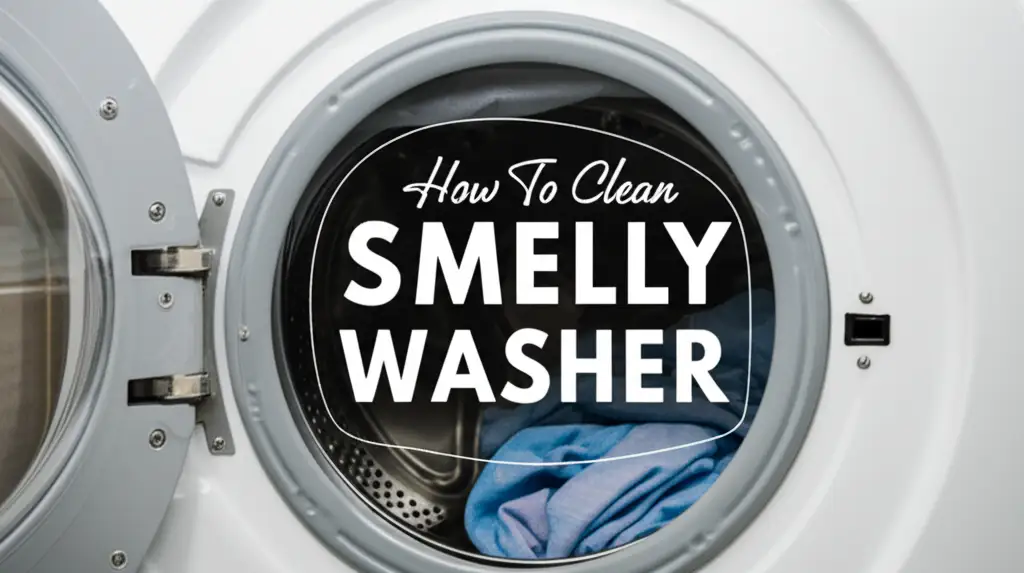· Home Cleaning · 17 min read
How To Clean Tineco Vacuum

How To Clean Your Tineco Vacuum for Peak Performance
Does your Tineco vacuum not perform as it used to? A dirty vacuum often loses its cleaning power. Regular cleaning of your Tineco vacuum is crucial. It ensures your machine works efficiently. It also extends the life of your appliance. Many people overlook proper vacuum maintenance. This guide will show you exactly how to clean Tineco vacuum components. You will learn step-by-step methods for optimal care. We will cover everything from the dirty water tank to the brush roller and filter. Keep your home spotless with a well-maintained Tineco. I will help you bring back its original suction and shine. Let’s get your Tineco running like new again.
Takeaway:
- Regularly empty and rinse the dirty water tank to prevent odor and mildew.
- Clean the brush roller often to remove hair and debris, ensuring effective floor contact.
- Wash or replace the HEPA filter as recommended to maintain strong suction.
- Perform the self-cleaning cycle after each use for hands-free brush and hose cleaning.
- Dry all components fully before reassembly to avoid mold or damage.
Tineco vacuums require consistent cleaning of their components, including the dirty water tank, brush roller, filter, and clean water tank. You must perform the self-cleaning cycle regularly. This ensures proper operation and prevents common issues like odors or reduced suction power.
Understanding Your Tineco Cleaning Needs
Your Tineco vacuum is a powerful tool for cleaning hard floors. It washes and vacuums at the same time. This means it handles both dry debris and wet messes. Because it deals with dirty water, it needs frequent cleaning. Neglecting this leads to bad smells and poor performance. Dirty parts can also harbor mold and bacteria. We want to avoid these issues. I recommend cleaning certain parts after every use. Other parts need weekly or monthly attention. This simple routine keeps your Tineco fresh and effective. You will notice a big difference in your cleaning results.
Different Tineco models may have slight variations in their design. However, the core components that need cleaning are similar across the range. For instance, the dirty water tank, the brush roller, and the filter are always present. Understanding each part’s function helps you clean it correctly. A clean dirty water tank means no foul odors spreading in your home. A clean brush roller picks up more dirt. A clean filter maintains strong suction. This knowledge empowers you to clean your Tineco confidently.
Step-by-Step Guide: Cleaning the Dirty Water Tank
The dirty water tank collects all the grime from your floors. It is the most critical part to clean regularly. If you do not empty it, foul odors can develop quickly. This tank holds dirty water, hair, and small debris. After every cleaning session, you must empty this tank. Do not let the dirty water sit in the tank for long periods. This prevents the growth of mold and mildew. I always empty mine immediately after I finish cleaning.
To clean the dirty water tank, follow these steps:
- Remove the tank: Locate the dirty water tank on your Tineco vacuum. Press the release button or pull the latch. Carefully lift the tank from the main unit.
- Empty contents: Pour all the dirty water and debris into a sink or toilet. You may see hairballs or gunk. This is normal.
- Rinse thoroughly: Rinse the inside of the tank with clean tap water. Use warm water if possible. Swirl the water around. Pour it out. Repeat this step several times.
- Clean the float: The dirty water tank often has a float inside. This float tells the machine when the tank is full. Remove the float if it is detachable. Wash it under running water. Ensure no debris clings to it.
- Wipe down: Use a soft cloth to wipe down the inside and outside of the tank. Pay attention to any sticky residue. A little dish soap can help with stubborn grime.
- Air dry: Let the tank air dry completely before putting it back. Leaving it wet can lead to mold. Place it upside down on a drying rack. Ensure good air circulation.
Proper cleaning of the dirty water tank stops odors before they start. It also ensures accurate “tank full” readings from the float. This simple step makes a big difference in your Tineco’s performance.
Revitalizing the Brush Roller: A Key Cleaning Step
The brush roller is where all the action happens. It scrubs your floors and picks up debris. Hair, pet fur, and lint often wrap around it. This buildup prevents the roller from spinning correctly. It reduces your vacuum’s cleaning effectiveness. A dirty brush roller can also scratch delicate floors. I make sure to check my brush roller after every few uses. It is vital for maintaining your Tineco’s optimal performance. Cleaning the brush head on any vacuum, much like how you would clean a Dyson vacuum head, is a crucial step for maintaining suction and preventing damage to floors.
Here is how you clean your Tineco brush roller:
- Remove the brush cover: Most Tineco models have a removable brush roller cover. This cover protects the brush and is easy to detach. Refer to your manual for exact instructions. It usually involves pushing a latch or lifting a tab.
- Take out the brush roller: Once the cover is off, lift the brush roller out. It should come out easily.
- Remove tangled debris: This is the main part. Use scissors to carefully cut away any tangled hair or thread. Be gentle to avoid damaging the bristles. Pull the debris off the roller. You can use a brush cleaning tool if your Tineco came with one.
- Rinse the roller: Rinse the brush roller under running water. Use warm water to dislodge any remaining dirt or grime. You can use a mild soap if the roller is very dirty.
- Clean the brush chamber: While the roller is out, wipe the brush chamber area. Debris can collect here. Use a damp cloth to clean it. Make sure no hair or dirt remains.
- Air dry completely: Place the brush roller upright or on a drying rack. Let it air dry fully. This can take several hours. Do not put a wet roller back into the vacuum. This prevents mildew and damage to the motor.
- Reassemble: Once dry, place the brush roller back into its chamber. Snap the brush cover back into place.
A clean brush roller ensures your Tineco glides smoothly. It picks up maximum dirt and leaves your floors sparkling. This step is non-negotiable for a well-functioning vacuum.
Maintaining the Clean Water Tank and Solution
The clean water tank holds the fresh water and cleaning solution. It is less prone to grime than the dirty water tank. However, it still needs attention. Residue from cleaning solutions can build up over time. This can clog the water dispensing system. Regular rinsing keeps the solution flowing smoothly. I make sure to use only Tineco-approved solutions. Other solutions might foam too much or damage the machine.
To clean the clean water tank:
- Empty unused solution: After each use, empty any leftover clean water and solution. Do not store the vacuum with solution in the tank for long periods. This prevents solution from sitting stale.
- Rinse the tank: Rinse the inside of the clean water tank with fresh tap water. Swirl the water around. Pour it out. You can repeat this once or twice.
- Wipe the exterior: Wipe the outside of the tank with a clean, damp cloth. Remove any drips or smudges.
- Air dry: Let the clean water tank air dry completely. Place it upside down if possible. This ensures no moisture remains inside.
- Check the cap/seal: Inspect the cap or seal of the tank. Ensure it is clean and free of residue. A dirty seal can lead to leaks.
Keeping the clean water tank pristine ensures pure water reaches your floors. It also prevents clogs in the internal water lines. This simple maintenance step contributes to your Tineco’s longevity.
The Importance of Cleaning Your Tineco Filter
The filter is crucial for your Tineco’s suction power. It traps fine dust and allergens. If the filter is clogged, air cannot flow properly. This reduces suction and strains the motor. A dirty filter can also release dust back into the air. Most Tineco models use a HEPA filter. This type of filter is very effective at trapping small particles. I always mark my calendar to remind myself to clean my Tineco filter. It is just as important as knowing how to clean a Shark vacuum filter cordless or any other vacuum’s filter.
Here is how you clean the Tineco filter:
- Locate the filter: The filter is usually located near the dirty water tank or in a separate compartment. Refer to your Tineco manual for the exact location.
- Remove the filter: Twist or pull the filter to remove it from its housing.
- Tap out loose debris: Gently tap the filter over a trash can. This removes any loose dust and debris. Do not hit it too hard.
- Rinse the filter (if washable): Many Tineco filters are washable. Check your manual to confirm. If washable, rinse the filter under cool, running water. Rinse until the water runs clear. Do not use soap or hot water.
- Squeeze excess water: Gently squeeze the filter to remove excess water. Be careful not to damage the filter material.
- Air dry completely: This is the most critical step. The filter must be completely dry before reinserting it. This can take 24-48 hours. Placing it in direct sunlight or using a fan can speed up drying. Never put a wet filter back into the vacuum. This can damage the motor and cause mold.
- Replace if needed: Filters have a lifespan. Even washable filters need replacing every 3-6 months. This depends on usage. A very dirty or damaged filter should be replaced immediately.
A clean filter ensures powerful suction. It also protects your motor from overheating. Proper filter maintenance keeps your air clean and your vacuum strong. For comparison, understanding how to clean a Dyson vacuum filter follows similar principles of careful rinsing and complete drying.
Utilizing the Tineco Self-Cleaning Cycle
Many Tineco models come with a convenient self-cleaning cycle. This feature makes maintaining your vacuum much easier. It cleans the brush roller and the internal tubes automatically. The vacuum uses clean water from the clean water tank. It flushes out debris into the dirty water tank. This cycle is not a substitute for manual cleaning. But it significantly reduces how often you need to take parts apart. I use the self-cleaning cycle after every single use.
How to perform the self-cleaning cycle:
- Ensure sufficient water: Make sure the clean water tank has enough water. It should be at least half full, ideally full.
- Place on charging base: Put your Tineco vacuum back on its charging base. Make sure it is securely docked.
- Empty dirty water tank (optional but recommended): While the self-cleaning cycle works with a partially full dirty water tank, I always empty it beforehand. This allows the dirty water from the self-clean cycle to collect without overflowing.
- Start the cycle: Press the self-clean button. This button is usually located on the handle or the main unit. The vacuum will then start the process. It typically takes a few minutes.
- Wait for completion: The vacuum will run through its cycle. It may make different sounds. Wait until the vacuum announces its completion. It might say “Self-cleaning complete.”
- Empty the dirty water tank again: After the cycle finishes, empty the dirty water tank immediately. It will contain dirty water and flushed debris.
- Clean the charging base: The self-cleaning cycle can leave dirty water residue on the charging base. Wipe the base tray with a cloth. Make sure it is clean and dry.
The self-cleaning cycle is a fantastic feature. It keeps your Tineco hygienic and ready for the next cleaning session. Remember, it is a great supplement to, not a replacement for, the manual cleaning steps.
Deep Cleaning the Main Unit and Accessories
Beyond the primary components, your Tineco’s main body and accessories also gather dust and grime. This is where a bit of extra attention goes a long way. The exterior of the vacuum can become sticky or dusty. Wheels can collect hair and debris. Even the charging base can get dirty. I like to give my whole vacuum a thorough wipe-down every few weeks. This keeps it looking good and functioning properly.
Here’s how to deep clean these areas:
- Wipe the main body: Use a soft, damp cloth to wipe down the entire exterior of the vacuum. Pay attention to the handle, control panel, and body. You can use a mild all-purpose cleaner if needed. Avoid spraying water directly onto the vacuum.
- Clean the wheels: The wheels can get tangled with hair and dust. Use a small brush or tweezers to remove any debris. Ensure the wheels can spin freely. Blocked wheels make it harder to maneuver the vacuum.
- Clean the charging base: The charging base often has a tray where the dirty water drains during self-cleaning. Remove this tray. Rinse it under running water. Wipe it dry. Also, wipe the charging contacts on the base and the vacuum with a dry cloth. This ensures a good connection.
- Inspect and clean accessories: If your Tineco came with extra brush heads or nozzles, inspect them. Clean any debris or hair. Rinse them if they are washable. Air dry them completely.
- Check internal pathways: Shine a flashlight down the internal pathways where water and debris travel. Look for any blockages. If you see one, refer to your manual for how to clear it. Sometimes, a long brush can help.
Regular deep cleaning prevents hidden buildup. It ensures every part of your Tineco operates smoothly. This detailed care adds years to your vacuum’s life.
Troubleshooting Common Cleaning Issues
Even with regular cleaning, you might encounter issues. Reduced suction, bad odors, or leaks are common problems. Often, these issues stem from incomplete cleaning or overlooked areas. Do not worry; most problems have simple solutions. I have faced many of these myself, and usually, a good clean solves them. Knowing how to clean any vacuum effectively often starts with understanding common troubleshooting steps.
Here are some common issues and their fixes:
Reduced Suction Power:
- Clogged Filter: Check if your filter is clean and completely dry. A wet or dirty filter severely restricts airflow.
- Blocked Brush Roller: Hair or debris wrapped around the brush roller stops it from spinning. Remove all tangles.
- Obstructed Dirty Water Tank Inlet: The opening where dirty water enters the tank can get clogged. Check it for debris.
- Internal Hose Blockage: Sometimes, gunk builds up in the internal hoses. Run the self-cleaning cycle several times. If it persists, you may need to manually check for blockages by disassembling components (refer to your manual).
Bad Odors:
- Dirty Water Tank: This is the most common cause. Ensure you empty and rinse the dirty water tank immediately after every use. Let it air dry completely.
- Wet Brush Roller: A wet brush roller left inside the vacuum can develop mildew. Always ensure it is dry before reinserting.
- Gunk in Brush Chamber: Debris in the brush roller housing can also cause smells. Clean this area thoroughly.
- Solution Residue: Using non-Tineco solutions can leave sticky residue that smells over time.
Leaking Water:
- Improperly Seated Tanks: Ensure both the clean and dirty water tanks are correctly clicked into place.
- Damaged Tank Seals: Check the rubber seals on your tanks for cracks or wear. Replace them if damaged.
- Overfilling Tanks: Do not fill the clean water tank above the MAX line. Do not let the dirty water tank overflow during use.
- Wet Filter: A wet filter can cause water to drip from the air vents. Ensure it is fully dry.
Vacuum Not Charging:
- Dirty Charging Contacts: Clean the metal charging contacts on both the vacuum and the base with a dry cloth.
- Improper Docking: Ensure the vacuum is correctly seated on the charging base. You should hear a click.
Regular maintenance prevents most of these issues. If a problem persists, contact Tineco customer support. They can provide specific advice for your model.
Longevity Tips for Your Tineco Vacuum
Caring for your Tineco vacuum extends its lifespan significantly. Beyond regular cleaning, a few habits can ensure your machine works for years. Think of it as investing in your home’s cleanliness and your appliance’s health. I follow these tips to keep my Tineco running strong. These simple practices go beyond basic cleaning. They are about smart use and protection.
Here are my top longevity tips:
- Use Only Tineco-Approved Solutions: Tineco designs its vacuums to work with specific formulas. Using other brands can cause excess foaming, damage the internal components, or leave residue. Stick to the recommended cleaning solutions for optimal performance and safety.
- Avoid Vacuuming Large Debris: While powerful, Tineco vacuums are for general floor cleaning, not construction debris. Avoid picking up large, sharp objects, excessive dry clumps of food, or highly viscous liquids. These can clog or damage the internal mechanisms and pump.
- Store Properly: When not in use, store your Tineco vacuum in a dry, room-temperature environment. Extreme temperatures can affect battery life and plastic components. Keep it on its charging base to ensure it is always ready for the next clean.
- Check for Blockages Before Use: Before each cleaning session, take a quick look at the dirty water tank inlet and brush roller area. A quick visual check can spot potential clogs before they become major problems.
- Replace Worn Parts: Filters, brush rollers, and even tank seals wear out over time. Replace them as recommended in your manual or when you notice performance degradation. Using worn-out parts can stress the motor or reduce cleaning effectiveness.
- Charge Consistently: For battery-powered Tineco models, consistent charging is key. Avoid completely draining the battery frequently. Keep it charged when not in use to maintain battery health.
- Read Your Manual: Each Tineco model has unique features and specific care instructions. Your user manual is the best resource for detailed cleaning guides, troubleshooting, and part replacement information.
By following these simple practices, you protect your investment. Your Tineco vacuum will continue to deliver excellent cleaning results. It will serve your home effectively for a much longer time.
Frequently Asked Questions About Tineco Vacuum Cleaning
How often should I clean my Tineco vacuum?
You should empty and rinse the dirty water tank after every use. Clean the brush roller weekly or after every few uses. Wash the filter monthly or every 3-6 months, depending on usage. Always perform the self-cleaning cycle after each cleaning session.
Can I use any cleaning solution in my Tineco vacuum?
No, it is best to use only Tineco-branded cleaning solutions. Other solutions might cause excessive foaming, leave sticky residues, or damage the internal components of your vacuum. Always refer to your user manual for recommended solutions.
What causes a bad smell from my Tineco vacuum?
A common cause of bad odors is the dirty water tank. If left unemptied, it can harbor mold and bacteria. An uncleaned brush roller or a wet filter can also develop mildew. Ensure all parts are thoroughly cleaned and completely dry before reassembly.
How long does the filter take to dry?
Tineco filters, if washable, need to air dry completely. This process typically takes 24 to 48 hours. It is crucial for the filter to be bone dry before reinserting it into the vacuum. A wet filter can damage the motor or grow mold.
My Tineco vacuum has low suction. What should I do?
First, check and clean your filter. A clogged filter is the most common reason for low suction. Next, inspect the brush roller for any tangled hair or debris. Also, check the dirty water tank inlet and internal hoses for blockages. Performing the self-cleaning cycle can help clear some internal clogs.
Is the self-cleaning cycle enough to clean my Tineco?
The self-cleaning cycle is very helpful for maintaining the brush roller and internal pathways. However, it does not clean the dirty water tank, the filter, or the exterior of the machine. You still need to perform manual cleaning steps regularly for thorough maintenance.
Conclusion
Keeping your Tineco vacuum clean is a straightforward process. It is a vital step for maintaining its performance. I have shared with you all the essential steps to clean Tineco vacuum models thoroughly. From regularly emptying the dirty water tank to cleaning the brush roller, filter, and even using the self-cleaning cycle, each action contributes to a more efficient and hygienic cleaning experience. Remember, a clean vacuum lasts longer. It also ensures your floors are truly spotless. By following these simple, consistent cleaning habits, you protect your investment. You keep your Tineco operating at its very best. Make regular cleaning a part of your routine. Your home will thank you for it. Start cleaning your Tineco vacuum today and enjoy sparkling clean floors every time.
- Tineco vacuum
- vacuum cleaner
- cleaning guide
- appliance care
- home maintenance




